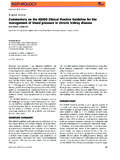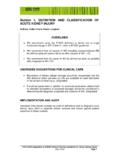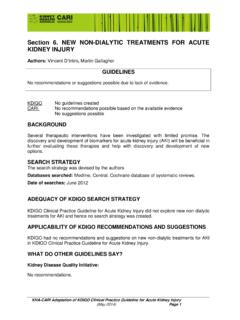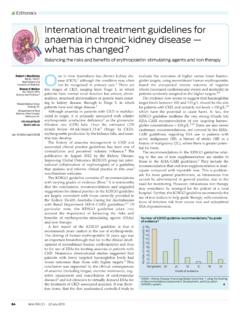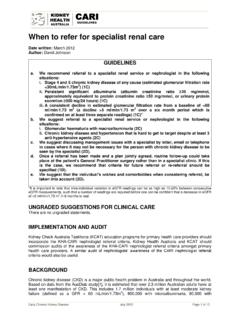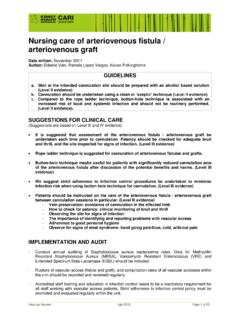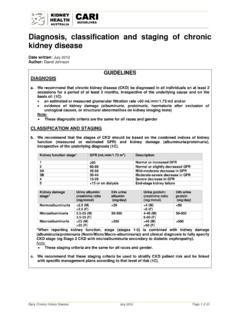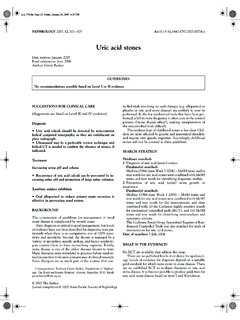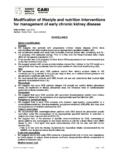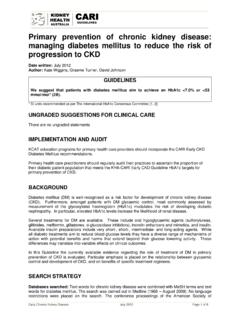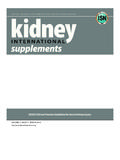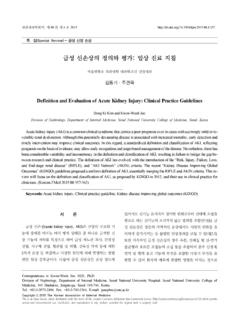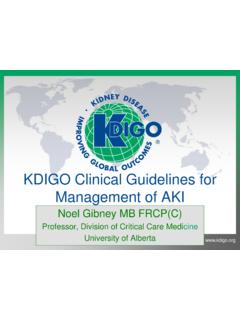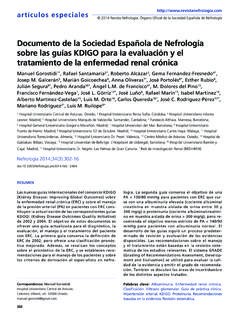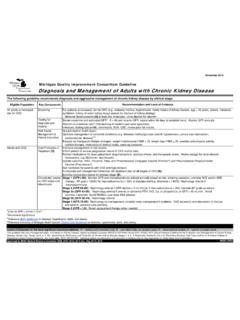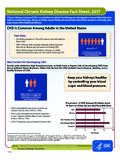Transcription of Editorial Commentary on the KDIGO Clinical …
1 EditorialCommentary on the KDIGO Clinical Practice Guidelinefor GlomerulonephritisNot so long ago, a paper published inKidney Internationalexplored the reasons for the paucity of high-quality clinicaltrials in glomerulonephritis (GN).1 The authors identifiedseveral factors, including the low prevalence of disease, vari-ability in Clinical presentation, variability in treatmentresponses, lack of consensus about definitions, difficulty inrecruiting patients, the high cost of randomized controlledtrials, and the lack of collaborative research efforts.
2 To thislist, I would also add our poor understanding of the patho-genesis of most if not all of the glomerulonephritides com-monly encountered in Clinical practice. This point is relevantbecause it limits the variety of new therapies that we can putup for Clinical trials, and ultimately our ability to punchthrough the therapeutic envelope, so to speak. This is not tosay that progress has not been made, but simply that we donot have enough hard data to provide precise advice on allaspects of , there is a need for Clinical practice serve many purposes, the most important ofwhich is to set down boundaries to define what is reasonableto do, and in so doing, either directly or indirectly.
3 Also setdown what is not reasonable to KDIGO Clinical Practice Guideline for Glomerulone-phritis published in 2012 aims to do this and much to present a series of treatment recommendationsand suggestions based on the available evidence for a numberof glomerulonephritides. It also grades the quality of evidencebehind these recommendations. Notably, several conditionsare not covered, such as the management of diabetic neph-ropathy, dysproteinaemias, fibrillary GN and haemolytic-uraemic syndrome. Arguably, these latter conditions are notstrictly inflammatory glomerulonephritides, but nonetheless,they can affect the glomerulus predominantly.
4 In a series ofchapters, each dedicated to a specific GN, a set format is usedto tackle various aspects of Clinical management such asinduction therapy, maintenance therapy, management ofrelapse, and management of resistant disease. At the start ofthese subsections, recommendations and suggestions aremade (annotated Level 1 and 2, respectively), followed bygrading of the quality of evidence behind these recommen-dations (annotated A, B, C and D for high, moderate, low andvery low quality of evidence). A brief background is provided,the rationale for these recommendations/suggestions is dis-cussed, including a summary of the most relevant clinicaltrials, and a number of recommendations are made for futureresearch.
5 The references to publications are listed together inone location at the end of the achieve this mammoth task, an Evidence Review Teamof physician-methodologists worked closely with a WorkGroup of clinicians to develop the relevant Clinical questions,search the literature up to November 2011, grade the qualityof evidence for each topic, and finally arrive at a series ofrecommendations and suggestions. There seems to be anoperational assumption that every minute aspect of our clini-cal decision-making process has to be based on a randomizedcontrolled trial.
6 This position may be scientifically sound, butit is not achievable in reality or even desirable. Incidentally,the panel of clinicians which made up the Work Group isinternational in representation, and I note with interest theinclusion of an Australian nephrologist in the total, 47 Level 1 recommendations and 120 Level 2suggestions were made. The major problem, however, lieswith the fact that the vast majority (77%) of these recom-mendations and suggestions were made based on what wasjudged to be either low (class C) or very low (class D) qualityevidence.
7 It is important to note that the available quality ofevidence varies widely between the different conditions. Forexample, the quality of evidence for some aspects of man-agement in lupus nephritis and idiopathic membranousnephritis was moderate, but very low for others such as focaland segmental glomerulosclerosis. Only four of 47 Level 1recommendations were based on high quality (class A) evi-dence, and 24 of 47 Level 1 recommendations were based onmoderate quality (class B) evidence. That left 19 Level 1recommendations based on class C or D evidence.
8 On theother hand, 110 of the 120 Level 2 suggestions were basedon class C or D would think that Level 1 recommendations shouldonly be made in the context of class A and B evidence, andthat no recommendations or suggestions should be madebased on class C or D evidence. But this is apparently not thecase. In the Methods for guideline development section, weare told that besides the quality of evidence, the Work Grouptook into account other factors such as the balance of benefitsand harm, cost, perception of what the majority of nephrolo-gists would do in a particular situation, and on top of these, Isuspect perhaps a dose of expert opinion.
9 In relation to cost,there is regular mention at the start of each chapter that thecost implications for global application of this guideline havebeen addressed in an earlier chapter. However, cost-benefitanalysis is nowhere to be found in this document. For rela-tively cheap medicines such as prednisolone, this is probablynot a significant issue. But this is a relevant issue for expensiveitems such as mycophenolate mofetil or rituximab, and it isbs_bs_bannerNephrology18(2013) 483 484 2013 The AuthorNephrology 2013 Asian Pacific Society of Nephrology483relevant not only in developing countries, but also in devel-oped countries such as Australia where there are competingdemands for a finite health comments aside, what is my assessment of theguideline s recommendations and suggestions?
10 Based on myreading of the literature, my Clinical experience, observationof what my departmental colleagues would do in particularclinical situations, and also my perception of what Australiannephrologists would do, it is my impression that this KDIGO document has made resoundingly good calls in general, andit reaffirms what I think is the solid middle ground of clinicalrecommendations. I think that the chapters on idiopathicmembranous nephropathy and lupus nephritis are particu-larly well written and informative.
